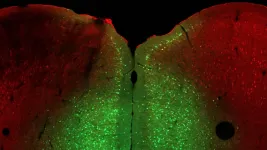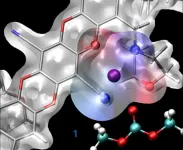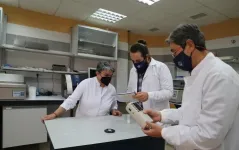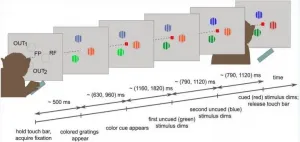Neanderthal ancestry identifies oldest modern human genome
The fossil skull of a woman in Czechia has provided the oldest modern human genome yet reconstructed, representing a population that formed before the ancestors of present-day Europeans and Asians split apart
2021-04-07
(Press-News.org) Ancient DNA from Neandertals and early modern humans has recently shown that the groups likely interbred somewhere in the Near East after modern humans left Africa some 50,000 years ago. As a result, all people outside Africa carry around 2% to 3% Neandertal DNA. In modern human genomes, those Neandertal DNA segments became increasingly shorter over time and their length can be used to estimate when an individual lived. Archaeological data published last year furthermore suggests that modern humans were already present in southeastern Europe 47-43,000 years ago, but due to a scarcity of fairly complete human fossils and the lack of genomic DNA, there is little understanding of who these early human colonists were - or of their relationships to ancient and present-day human groups.
In a new study published in Nature Ecology & Evolution, an international team of researchers reports what is likely the oldest reconstructed modern human genome to date. First discovered in Czechia, the woman known to researchers as Zlatý k?? (golden horse in Czech) displayed longer stretches of Neanderthal DNA than the 45,000-year-old Ust'-Ishim individual from Siberia, the so-far oldest modern human genome. Analysis suggests that she was part of a population that formed before the populations that gave rise to present-day Europeans and Asians split apart.
A recent anthropological study based on the shape of Zlatý k??'s skull showed similarities with people who lived in Europe before the Last Glacial Maximum - at least 30,000 years ago - but radiocarbon dating produced sporadic results, some as recent as 15,000 years ago. It wasn't until Jaroslav Br?žek from the Faculty of Science, Prague and Petr Velemínský of Prague's National Museum collaborated with the genetics laboratories of the Max Planck Institute for the Science of Human History that a clearer picture came into view.
"We found evidence of cow DNA contamination in the analyzed bone, which suggests that a bovine-based glue used in the past to consolidate the skull was returning radiocarbon dates younger than the fossil's true age," says Cosimo Posth, co-lead author of the study. Posth was formerly a research group leader at the Max Planck Institute for the Science of Human History and is currently Professor of Archaeo- and Palaeogenetics at the University of Tübingen.
However, it was the Neandertal DNA that led the team to their major conclusions about the age of the fossil. Zlatý k?? carried about the same amount Neanderthal DNA in her genome, as Ust Ishim or other modern humans outside Africa, but the segments with Neanderthal ancestry were on average much longer.
"The results of our DNA analysis show that Zlatý k?? lived closer in time to the admixture event with Neanderthals," says Kay Prüfer, co-lead author of the study.
The scientists were able to estimate that Zlatý k?? lived approximately 2,000 years after the last admixture. Based on these findings, the team argues that Zlatý k?? represents the oldest human genome to date, roughly the same age as - if not a few hundred years older than - Ust'-Ishim.
"It is quite intriguing that the earliest modern humans in Europe ultimately didn't succeed! Just as with Ust'-Ishim and the so far oldest European skull from Oase 1, Zlatý k?? shows no genetic continuity with modern humans that lived in Europe after 40,000 years ago," says Johannes Krause, senior author of the study and director at the Max Planck Institute for Evolutionary Anthropology.
One possible explanation for the discontinuity is the Campanian Ignimbrite volcanic eruption roughly 39,000 years ago, which severely affected climate in the northern hemisphere and may have reduced the survival chances of Neanderthals and early modern humans in large parts of Ice Age Europe.
As advances in ancient DNA reveal more about the story of our species, future genetic studies of other early European individuals will help to reconstruct the history and decline of the first modern humans to expand out of Africa and into Eurasia before the formation of modern-day non-African populations.
INFORMATION:
[Attachments] See images for this press release:
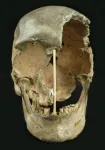
ELSE PRESS RELEASES FROM THIS DATE:
2021-04-07
Analysis by international team including University of Warwick of the first transiting exoplanet that was discovered has revealed six different chemicals in its atmosphere.
It is the first time that so many molecules have been measured, and points to an atmosphere with more carbon present than oxygen
This chemical fingerprint is typical of a planet that formed much further away from its sun than the current location, a mere 7 million km from the star
Study tests techniques that will be useful for detecting signs of potentially habitable planets when more powerful telescopes come online
Artist's impression available - see Notes to Editors
Astronomers have found ...
2021-04-07
A new clinical trial from King's College London's Institute of Psychiatry, Psychology, & Neuroscience, in collaboration with Oxford University, Oxford Health NHS Foundation Trust, Sussex University, and Sussex Partnership NHS Foundation Trust has established an innovative therapy as an effective means of treating paranoid thoughts in people experiencing psychosis.
In research published in JAMA Psychiatry today, participants of the SlowMo therapy trial had eight face-to-face therapy sessions with support from an interactive web platform and app. The app, designed in collaboration with people experiencing psychosis and the Royal College of Art, is used outside the clinic to help individuals feel safer in daily life.
Paranoia is fuelled ...
2021-04-07
Everyone faces stress occasionally, whether in school, at work, or during a global pandemic. However, some cannot cope as well as others. In a few cases, the cause is genetic. In humans, mutations in the OPHN1 gene cause a rare X-linked disease that includes poor stress tolerance. Cold Spring Harbor Laboratory (CSHL) Professor Linda Van Aelst seeks to understand factors that cause specific individuals to respond poorly to stress. She and her lab studied the mouse gene Ophn1, an analog of the human gene, which plays a critical role in developing brain cell connections, memories, and stress tolerance. When Ophn1 was removed in a specific part of the ...
2021-04-07
Membranes that allow certain molecules to quickly pass through while blocking others are key enablers for energy technologies from batteries and fuel cells to resource refinement and water purification. For example, membranes in a battery separating the two terminals help to prevent short circuits, while also allowing the transport of charged particles, or ions, needed to maintain the flow of electricity.
The most selective membranes - those with very specific criteria for what may pass through - suffer from low permeability for the working ion in the battery, which limits the battery's power and energy efficiency. ...
2021-04-07
The landscape of sloping vineyards on the banks of the River Mosel in Germany is a characteristic symbol of a region, which cannot be understood without its wine: the Mosel wine region. Tourists from all over the world, especially from the neighbouring countries of Belgium, Luxembourg, and The Netherlands visit the area in search of mountains and wine. However, the lack of new generations and the increase in temperatures and short heavy summer rainfall events caused by climate change endanger the production of wine.
In this sense, the European H2020 ...
2021-04-07
It was found that event horses that wear thin or thick bits in events had a greater risk of moderate or severe oral lesions compared to horses wearing medium-sized bits, while straight bits were associated with lesions in the bars of the horse's mouth.
"Our recommendation is to use a jointed bit of moderate thickness, that is 14 to 17 millimetres, if the size of the mouth is not known, paying particular attention to the handling of mares and both warmblood and coldblood event horses. They were seen to have a greater risk of mouth lesions compared to geldings and ponies," says doctoral student and veterinarian ...
2021-04-07
The global production of sheep's milk is one the rise, in the vast majority of cases used to produce cheese. However, a relatively large amount of milk is needed to produce it, so science is looking for ways to increase its yield; that is, to obtain more cheese using less milk.
Immersed in this task, a team from the Department of Animal Production at the University of Cordoba, led by Professor Ana Garzón, has collaborated with the University of Leon in the search for genetic parameters affecting the cheese production of milk from Churra sheep, one of the oldest and most rustic breeds on the Iberian Peninsula.
After analysing traits related to rennet and milk properties (pH, ...
2021-04-07
The way we move says a lot about the state of our brain. While normal motor behaviour points to a healthy brain function, deviations can indicate impairments owing to neurological diseases. The observation and evaluation of movement patterns is therefore part of basic research, and is likewise one of the most important instruments for non-invasive diagnostics in clinical applications. Under the leadership of computer scientist Prof. Dr Björn Ommer and in collaboration with researchers from Switzerland, a new computer-based approach in this context has been developed at Heidelberg University. As studies inter alia with human test persons have shown, this approach enables the fully automatic ...
2021-04-07
It is more complicated than copy and paste, but digital twins could be way of future manufacturing according to researchers from the University of Kentucky. They developed a virtual environment based on human-robot interactions that can mirror the physical set up of a welder and their project. Called a digital twin, the prototype has implications for evolving manufacturing systems and training novice welders. They published their work in the IEEE/CAA Journal of Automatica Sinica (Volume 8, Issue 2, February 2021).
"This human-robot interaction working style helps to enhance the human users' operational productivity and ...
2021-04-07
To effectively perform any daily task, the human brain needs to process information from the outside world using various cognitive functions. This cognitive processing passes through a dense interconnected network of cells whose physiology is specialized. The interconnected cell network needs to perform this processing of information efficiently and interact cooperatively to provide us, in real time, with useful instructions for living.
Research published on 23 March in the journal Proceedings of the National Academy of Sciences of the United States of America challenges recent scientific advances seeking to find out how cognitive control and sensory information relate to the cortical machinery ...
LAST 30 PRESS RELEASES:
[Press-News.org] Neanderthal ancestry identifies oldest modern human genome
The fossil skull of a woman in Czechia has provided the oldest modern human genome yet reconstructed, representing a population that formed before the ancestors of present-day Europeans and Asians split apart


